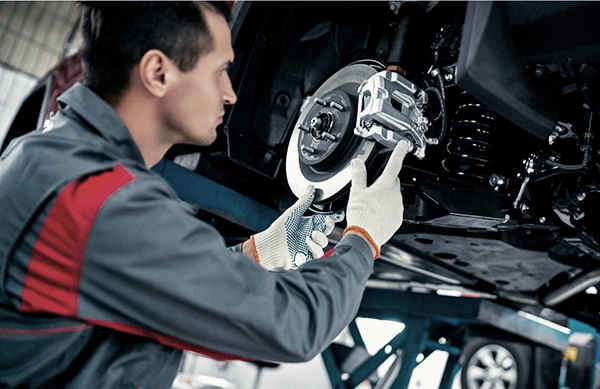Why are my brakes locking up?

Causes of Brake Lock-Up:
Worn Brake Pads
Worn brake pads can cause your brakes to lock up. As the pads wear down, they lose their ability to properly grip the rotor, which can lead to sudden and uneven braking.
Contaminated Brake Fluid
Brake fluid that is contaminated with water, dirt, or air can cause brakes to lock up. Contaminants affect the hydraulic pressure within the braking system, leading to inconsistent brake performance.
Faulty Brake Calipers
Brake calipers are responsible for applying pressure to the brake pads. If a caliper is sticking or malfunctioning, it can cause one or more wheels to lock up.
Damaged Rotors
Rotors that are warped or damaged can cause uneven braking. This can result in the brakes grabbing and locking up when you apply pressure.
Malfunctioning Anti-lock Brake System (ABS)
The ABS is designed to prevent wheel lock-up during braking. If the ABS is malfunctioning, it can fail to modulate brake pressure correctly, leading to lock-up.
Brake Line Issues
Brake lines can become pinched, cracked, or otherwise damaged, which can restrict the flow of brake fluid and cause uneven braking pressure.
Faulty Wheel Speed Sensors
Wheel speed sensors are part of the ABS system. If these sensors are faulty, they can send incorrect information to the ABS control module, resulting in improper brake application.
Master Cylinder Problems
The master cylinder distributes brake fluid to the brake calipers. If it is leaking or failing, it can cause inconsistent brake pressure and potential lock-up.
How to Fix Brake Lock-Up

- Inspect and Replace Brake Pads
Regularly check the thickness of your brake pads and replace them if they are worn. This ensures they can grip the rotor properly and provide smooth braking.
- Flush and Replace Brake Fluid
Contaminated brake fluid should be flushed from the system and replaced with clean fluid. This will help maintain proper hydraulic pressure.
- Check and Repair Brake Calipers
Inspect the brake calipers for sticking or damage. Repair or replace any faulty calipers to ensure they apply pressure evenly.
- Resurface or Replace Rotors
If your rotors are warped or damaged, have them resurfaced or replaced. This will ensure a smooth contact surface for the brake pads.
- Diagnose and Repair ABS
Use a diagnostic tool to check for ABS error codes. Repair any faults in the ABS system to ensure it functions correctly.
- Inspect Brake Lines
Check all brake lines for signs of damage or wear. Replace any lines that are pinched, cracked, or leaking.
- Test and Replace Wheel Speed Sensors
Test the wheel speed sensors using a multimeter. Replace any sensors that are not functioning correctly.
- Service the Master Cylinder
Inspect the master cylinder for leaks or wear. Replace the master cylinder if it is failing to maintain consistent brake pressure.
Interesting Facts About Brakes

Anti-Lock Braking System (ABS) History
The ABS technology was first developed for aircraft in the 1920s and later adapted for automobiles in the 1970s. It helps maintain steering control during emergency braking.
Regenerative Braking
Electric and hybrid vehicles use regenerative braking, which converts kinetic energy back into stored energy in the battery, increasing efficiency and range.
Ceramic Brake Pads
High-performance vehicles often use ceramic brake pads. These pads are known for their durability, ability to handle high temperatures, and producing less brake dust compared to traditional pads.
Disc vs. Drum Brakes
Disc brakes are generally more effective than drum brakes, especially in wet conditions. This is why most modern vehicles use disc brakes on the front wheels.
Brake Fade
Brake fade occurs when brakes overheat, causing a reduction in stopping power. This can happen during prolonged braking, example: driving down a steep hill.
Self-Adjusting Brakes
Many modern cars have self-adjusting brakes that automatically maintain the correct distance between the brake shoes and the drum, ensuring consistent braking performance.












